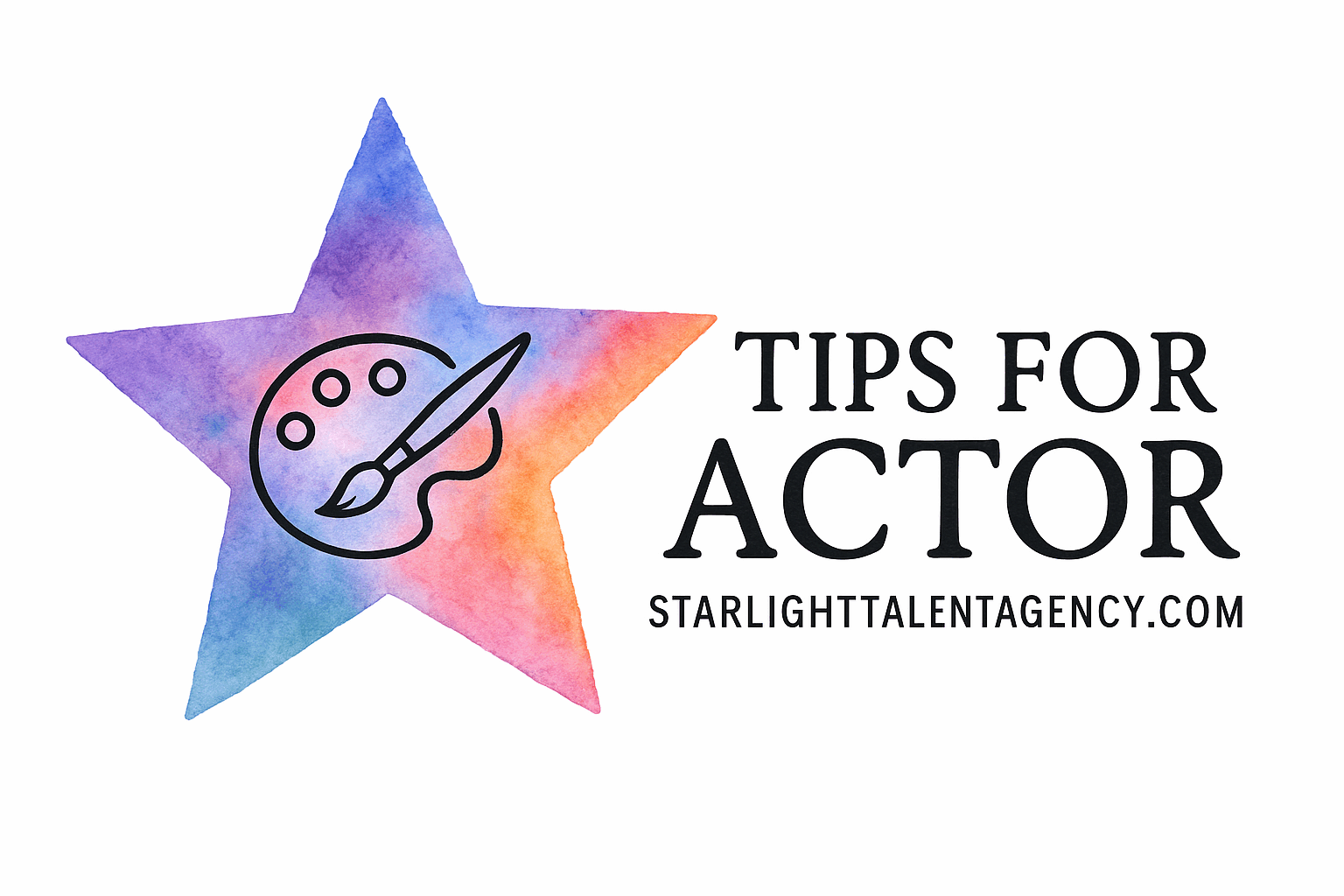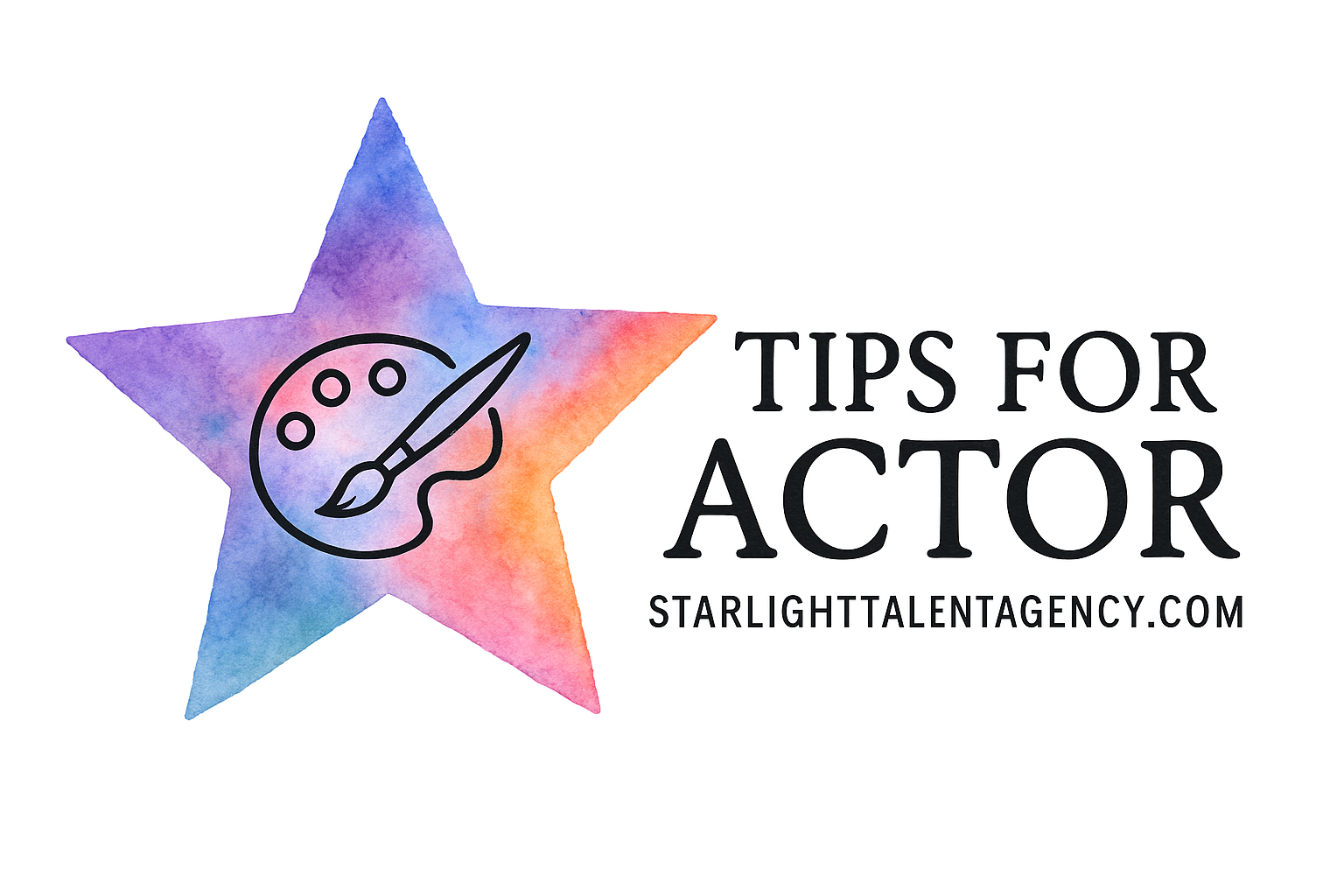Introduction: Why Background Setup Defines a Great Self-Tape
If you’ve been sending self-tapes lately, you already know — the background setup can make or break your first impression. With auditions moving increasingly online, how you frame and light yourself tells casting directors a lot before you even deliver a line.
A clean, intentional background shows your professionalism and camera awareness — both essential skills taught in Audition Preparation Basics. Think of your background as a silent partner in your performance: it should support your energy, not steal the spotlight.
The Power of Environment in On-Camera Auditions
First Impressions That Speak Volumes
When a casting director clicks “play,” they’re not just watching your performance — they’re evaluating the full visual. A chaotic background or dim lighting screams “unprepared.” A crisp, simple setup says “professional and camera-ready.”
How Casting Directors Read Your Setup
A solid background and clean sound tell casting directors that you understand on-camera acting fundamentals — the kind you can refine through Self-Tape Mastery. The better your setup, the easier it is for your performance to shine through.
Coaching Tip #1: Select a Clean, Neutral Background
Avoid Visual Noise
Skip the fancy decor. No posters, no clutter, no distractions. The best self-tapes feel clean and focused, letting your facial expressions drive the scene.
This aligns with Acting Space best practices — your environment should serve the performance, not compete with it.
Smart Color and Texture Choices
Soft gray, light blue, or beige are ideal colors for your backdrop. They complement most skin tones and blend seamlessly with both natural and studio lighting.
Coaching Tip #2: Perfect Your Lighting Setup
Balancing Natural and Artificial Light
Natural light is amazing, but it’s not always consistent. Facing a window during the day gives your self-tape a natural glow. For evenings or cloudy days, invest in a ring light or softbox kit.
For professional-level lighting and camera awareness, On-Camera Acting lessons can help refine your technique.

How to Avoid Shadows and Uneven Brightness
Avoid overhead lighting—it casts harsh shadows. Instead, position lights slightly above and to the side of your camera for an even glow across your face.
Coaching Tip #3: Improve Sound and Acoustics
Managing Echoes and Noise
Sound is just as vital as visuals. Curtains, rugs, and bookshelves can reduce echo naturally. If possible, record in a small room with soft surfaces.
Check out Body Acting for tips on using physical stillness to complement clean audio performance.
Best Tools for Clear Audio
Use a lavalier (clip-on) mic or a directional microphone for crisp sound. Avoid filming near appliances or traffic noise. The audience should hear you, not your surroundings.
Coaching Tip #4: Frame the Shot Like a Pro
Camera Position and Actor Placement
Frame yourself from mid-chest to just above your head. Your eyes should sit roughly one-third from the top of the frame.
This framing style is a key element of Scene Work — ensuring emotional connection while keeping your performance visually strong.
Maintaining Natural Eye-Line Connection
Don’t look directly into the camera lens unless instructed. Instead, pick a point just beside it to mimic conversation with your scene partner — a principle explored in Acting with Partners.
Coaching Tip #5: Add Depth and Space Awareness
Avoid Flat or Cluttered Shots
If you stand too close to the wall, your shot looks flat and lifeless. Step three to five feet away from your background to create depth and cinematic balance.
Use Distance to Create a Cinematic Look
That slight separation allows lighting to wrap around you naturally — a trick many seasoned performers learn in Advanced Audition Skills.
Coaching Tip #6: Match Setting with Character Energy
Reflecting Emotion Through Environment
A tense, emotional monologue might feel more grounded with cooler lighting and a simple setup. A lighthearted comedy scene could benefit from a slightly warmer tone.
Learn to use subtle visual cues — a concept explored in Character Development.
Small, Effective Scene Enhancements
Add texture with soft fabric or gentle light shadows. These small tweaks enhance mood without drawing focus from your performance.
Coaching Tip #7: Keep Consistency Across Self-Tapes
Creating a Professional Brand Look
Casting directors love consistency. When your tapes look cohesive, they subconsciously recognize your reliability. That’s how you start building a recognizable acting brand.
Maintaining Technical Uniformity
Use the same backdrop, camera angle, and lighting setup for every tape. It helps your submissions feel intentional — a topic discussed in Career Growth.
Coaching Tip #8: Use Backdrops and Curtains Effectively
Portable and Professional Backdrop Tips
Collapsible backdrop stands are perfect for actors on the go. Choose non-reflective fabrics to avoid glare and wrinkles.
Budget-Friendly DIY Backdrop Hacks
On a tight budget? No problem. A clean, ironed sheet in a neutral tone works perfectly. For more setup ideas, explore Self-Tape Setup.
Coaching Tip #9: Review and Adjust Before Sending
Quality-Check Checklist
Before hitting “submit,” play your recording twice — once without sound to check visuals, and again with sound to confirm clarity.
This type of detailed acting prep (see Acting Prep) separates pros from amateurs.
Getting Constructive Feedback
Ask your coach or talent representative for honest input. At Starlight Talent Agency, coaches offer one-on-one feedback sessions that help you elevate every submission.
Common Mistakes Actors Make in Self-Tapes
Clutter, Noise, and Overcomplication
Props, pets, and busy backgrounds dilute your performance. The best self-tapes are minimal, clean, and focused.
Poor Lighting and Framing Issues
Even an Oscar-worthy performance can fall flat if your lighting is off. Learn to test your gear early — consistency is part of maintaining your Career Mindset.
Expert Advice from Acting Coaches
Insights from Starlight Talent Agency
Coaches at Starlight Talent Agency emphasize the blend of technical precision and emotional truth. Through programs like Self-Tape Mastery and Advanced Audition Skills, they guide actors to present themselves authentically while mastering the camera craft.
Final Thoughts: Set the Stage for Success
Your background setup isn’t just a technical necessity—it’s part of your storytelling. It shows that you care about your craft, respect the casting process, and understand visual communication.
As the industry evolves, mastering your self-tape space will help you stand out among hundreds of digital auditions. And with guidance from Starlight Talent Agency, you can turn any room into your personal audition studio.
FAQs
1. What’s the best color for self-tape backgrounds?
Light gray or pale blue—they flatter skin tones and maintain focus.
2. Can I shoot my self-tape on a smartphone?
Yes! With good lighting and a tripod, smartphones can produce professional results.
3. How can I eliminate echo in my recordings?
Add curtains, rugs, or acoustic foam. Even hanging blankets can work wonders.
4. Should I adjust the background per scene?
Keep it simple and consistent unless the script demands otherwise.
5. What if I have limited space at home?
Use collapsible backdrops or neutral curtains — see Acting Space for inspiration.
6. Do acting agencies help improve self-tape skills?
Absolutely. Programs like Self-Tape Mastery focus on both performance and setup.
7. Why does consistency matter across self-tapes?
It builds recognition, professionalism, and helps casting directors focus solely on your performance.

